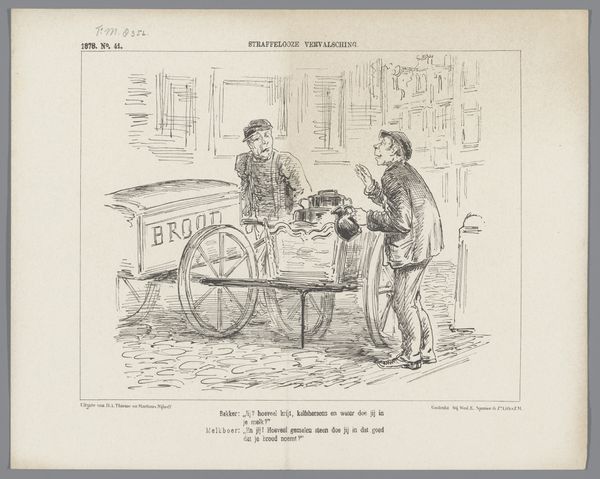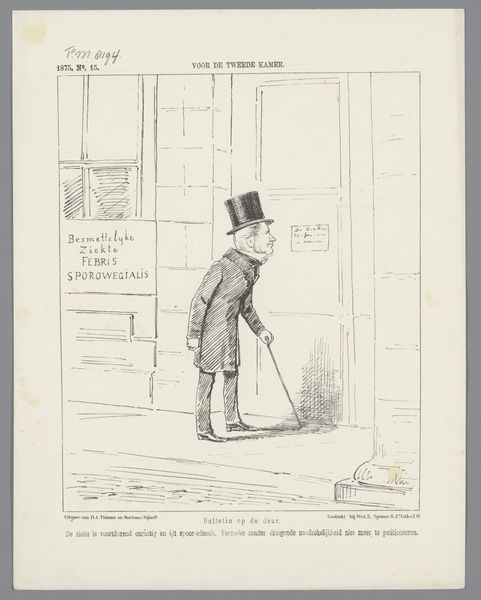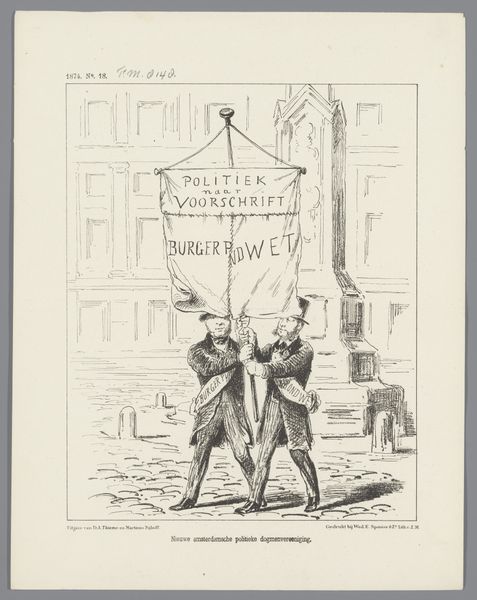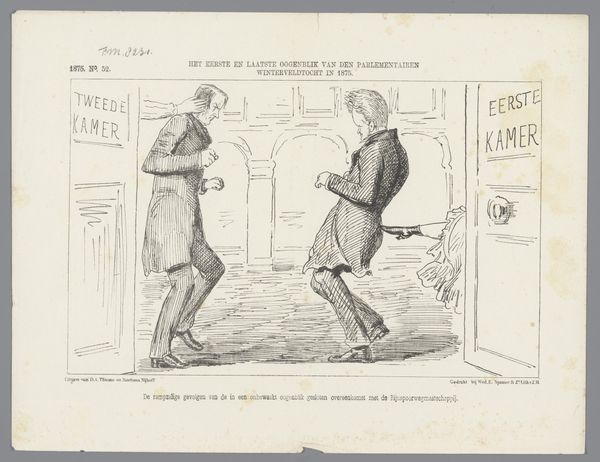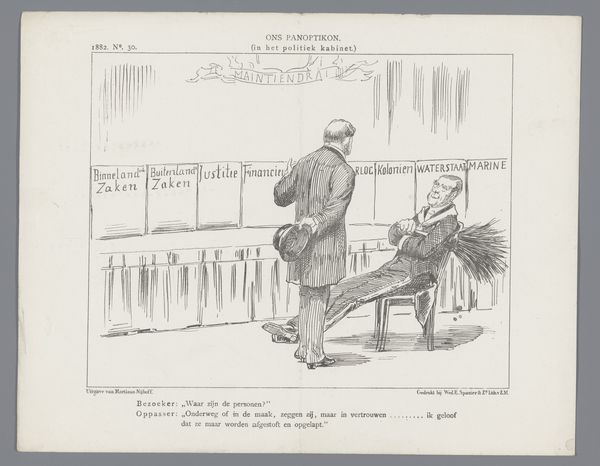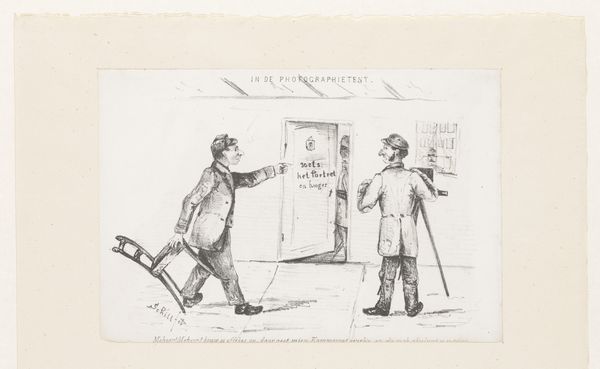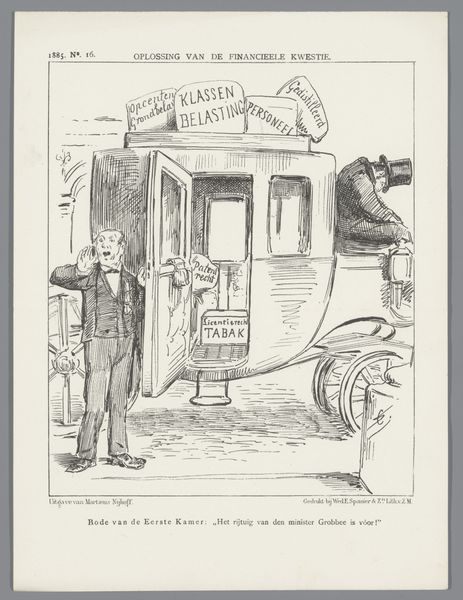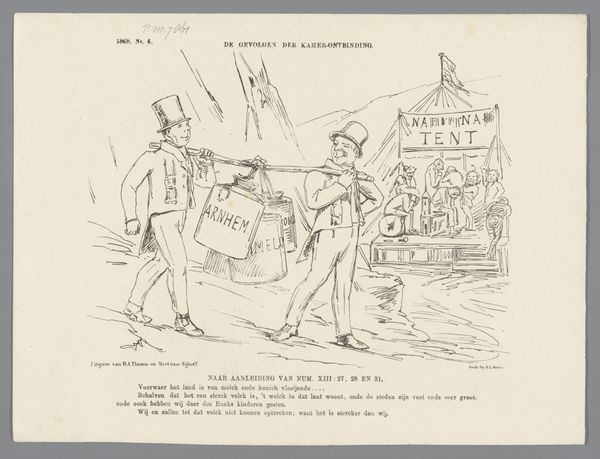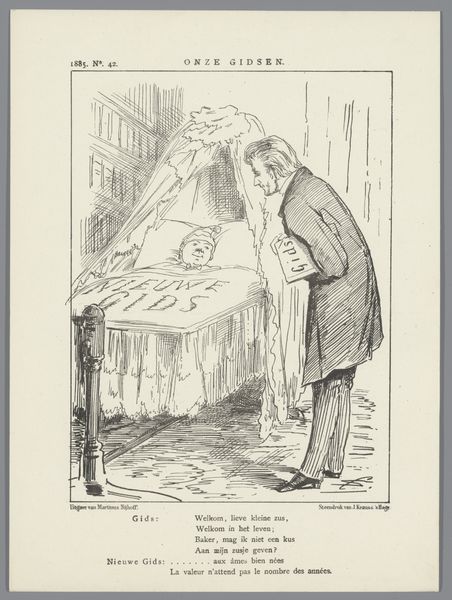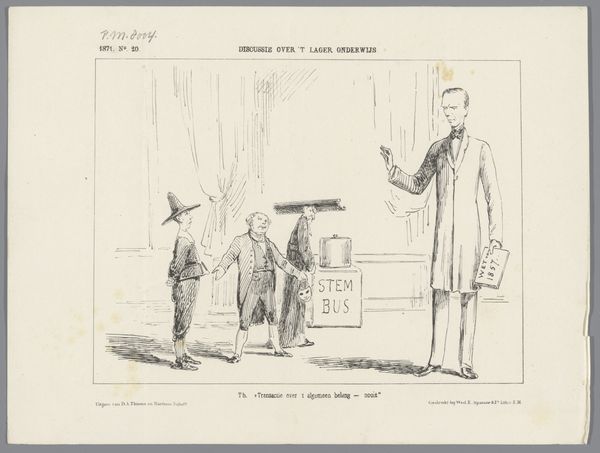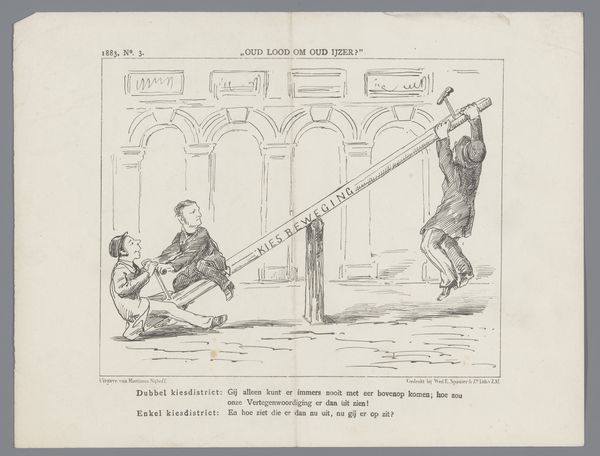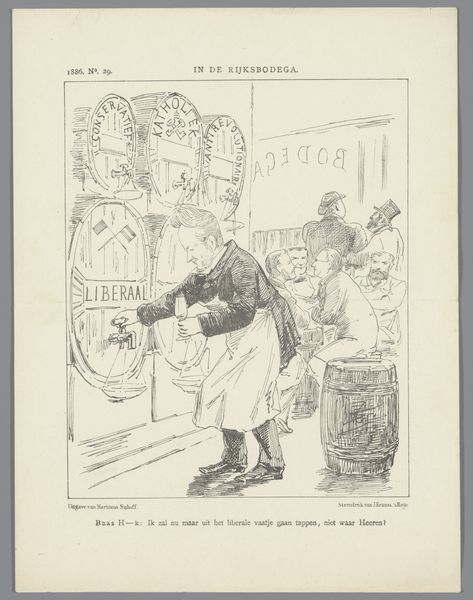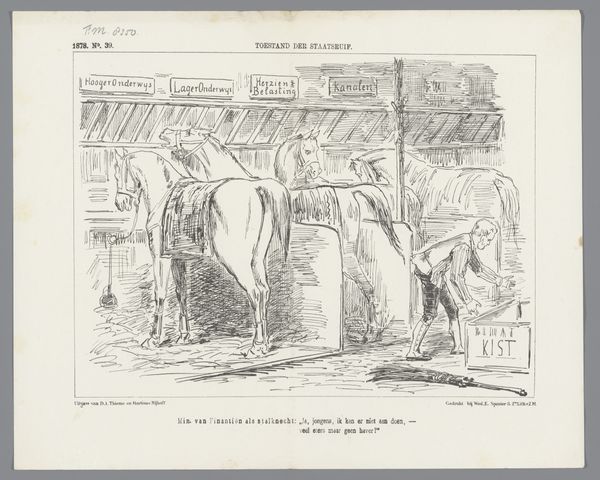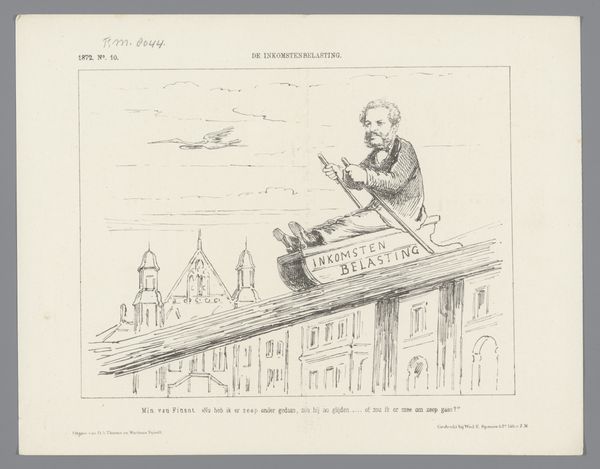
drawing, print, paper, ink
#
drawing
#
narrative-art
#
dutch-golden-age
# print
#
caricature
#
paper
#
ink
Dimensions: height 215 mm, width 275 mm
Copyright: Rijks Museum: Open Domain
Curator: Let’s turn our attention to this intriguing political cartoon from 1882 by Johan Michaël Schmidt Crans, simply titled, "Politieke spotprent." It’s an ink drawing reproduced as a print on paper. Editor: My initial impression is one of satire, with an emphasis on visual metaphors. The overall mood is rather grim and conveys a sense of heavy burden or questionable action. Curator: Indeed. Focusing on its formal qualities, the composition utilizes sharp lines to define the figures and architecture. The contrast between light and shadow is skillfully employed to draw attention to the central subjects, giving the entire image a hierarchical arrangement where our eyes immediately are driven towards the contrast of the "Generale Thesaurie" as its name is highlighted due to this technique. Editor: Agreed, and the piece also provides critical social commentary about the Netherlands and its colonial ambitions, as the title suggests: "Netherlands and its Colonies Saved.” The man pushing the wheelbarrow labeled "Generale Thesaurie" signifies the state extracting resources from the colonies—literally carrying them on his back to save his wealth. The individual inside the box looks less than amused at the idea of being ‘saved’. Curator: This could indicate a shift from extracting monetary value ("kas") from the colonies toward reversing this system by implementing something that would provide economic benefits back for them ("Koloniën"). Though the word play ("Anders"...) used in the lower side is an element of undeniable ambiguity for interpretation in what means those lines by its original author. Editor: That ambiguity could also suggest the illusion of help, or an attempt to frame colonial exploitation as benevolent aid. There's an evident power imbalance here as it evokes questions about the real implications of colonial economic policies and how they impacted colonized peoples. Who indeed benefits from colonial policies? Curator: Through Schmidt Crans' deliberate artistic execution, we glean more than just simple pictorials of economic control and possible "reversals of exploitations"… it encapsulates more than just line, contrast, composition, and hierarchy, although those remain very important elements when we address its political subject and visual dynamics. Editor: Absolutely. It makes you consider the long-lasting legacies of colonial economic policies, but also how we represent and perpetuate the complex realities of colonialism through artistic means. Curator: Indeed a point well made. I appreciate your comments about "Politieke spotprent;" It will cause us to come back and think differently as to what constitutes formal structure and political commentary as elements to shape public discourse on identity.
Comments
No comments
Be the first to comment and join the conversation on the ultimate creative platform.
